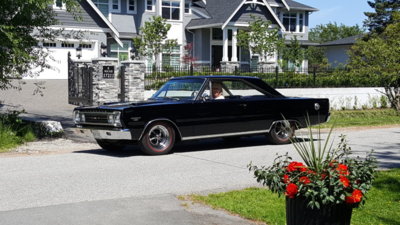@charger10 I'd be willing to bet you could have used more basic sanding time with the lower grits (220-400) if polishing and buffing aren't producing better results.
It's a lot easier to show someone how than to tell them, but basically don't move to the next finer grit sandpaper until the only thing you're doing is replacing the scratches you just made. Once you get good clarity and reflection throughout, then start with the buffer and compounds. Does that make any sense???
I admittedly polish a lot more aluminum than stainless but the general principles are the same. Just a few tips off the top of my head ...
Do not use variable speeds, especially if you're working on pieces of the same set. The results will be noticeably different. Modified bench grinders are awesome and cheap buffers on smalls. Caswell Plating has consumables but they're widely available on the internet.
Hold the piece firmly but gently. Do not press it so hard against the buff that it bogs down the motor; let the machine do the work -- you are merely its guide. It WILL get hot regardless of your pressure so good gloves are mandatory. A smock is a luxury (an old long sleeved shirt put on backwards is great -- be sure to button the sleeves) but a good face shield is not. Tie long hair back. (Mine's a 1 3/4 hp with 3650 rpm that earned my respect years ago. Learn from my mistakes lol!!! )
Buy a buff rake. It's worth the twelve bucks. This does not mean you can then mix and match your buffs and compounds! It just keeps the good buff material from getting all caked up.
Don't try out your buffer near anything of importance. Even practiced craftspeople catch an edge now and then ... and that piece will leave your hands at what you'll be certain was lightspeed. It can and will hurt you, and anything else within shooting distance. The buffer fluff and excess compounds will also make a serious mess and absolutely create a fire hazard if left to accumulate.
Some Medium reducer on a very soft rag (cloth diapers are ideal) will help clean cooled compounds off the metal. It seems they wipe off easily while the part is warm but, as well mentioned earlier, will remove that ultra thin layer of oxidation.
If I think of anything else I'll edit this post. Any other handy tips out there???
 10
10

















